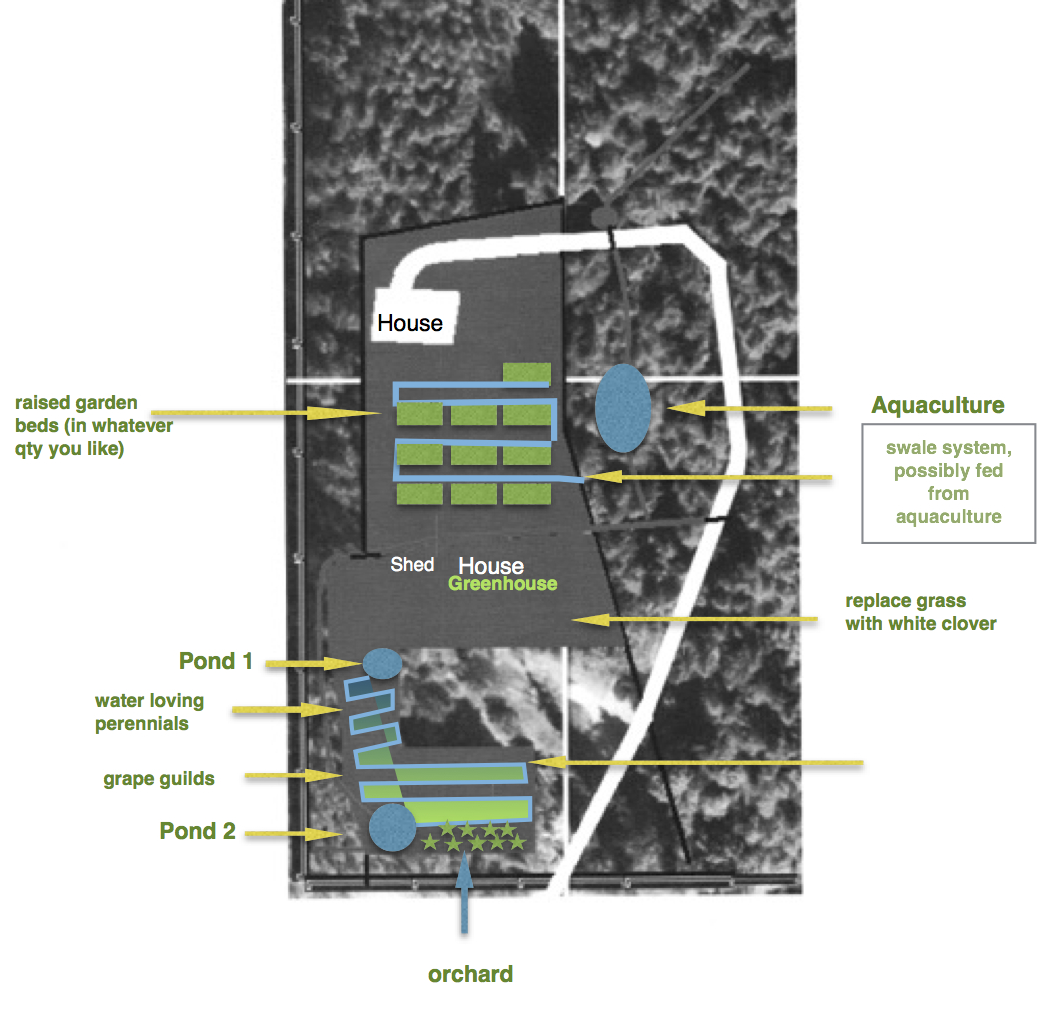Two years ago Emily and I decided to move to the Sunshine Coast, almost on a whim. She was able to get a job as a school counsellor on the Coast, while I decided to become a daily commuter. Although I knew the hours would be long, I make good use of my commuting time researching and responding to my client emails. Our main reason for moving though was a sense of longing for a quieter and more peaceful life away from the city. The Sunshine Coast is great for that as you are close enough to the city but too far for most people to want to live full time.
Last December we decided to go “all in” and sold our place in North Vancouver. We purchased 5 acres of densely forested property on the upper side of the Sunshine Coast Highway in Roberts Creek with the idea to clear the land and set up a permaculture based farm and a satellite location for Westcoast Integrative Health.
As I tend to want to do everything on my own, I bought a small chainsaw and started clearing a small chunk of dense bush in the front of our small house, in an effort to let some light into the property and open up the beautiful view our property has over my home town of Saltspring Island BC, Georgia Strait and Vancouver Island.
After a month of slagging away through the mild fall last November, I decided to buy an excavator and a larger falling chainsaw to move things along a little quicker. 8 months and 150 fallen trees later, we have cleared a path to our future farm and have got a lot of firewood to boot.
Homesteading is very hard work, and is not for the week hearted. I think the worst part about clearing land is killing trees. Many days while working away I thought of our ancestors and what hard work they had to endure. My great grandfather worked on the great Canadian Railway and Emily’s grandfather came to Canada as a logger in Quebec. It gave some sense of satisfaction to take and active role in what we have been able to build today and a lot of the wood that was fallen off the property has been and will be milled into lumber to build our house, greenhouse and other outbuldings such as fences and chicken run.
At present we have finished creating all of our water systems, which includes 3 ponds and drainage from all areas of the property into our water supplies. The clearing and water collection has virtually taken 8 months of work. Yet water is the most important thing that one needs to be a successful permaculturalist.
Permaculture, for those who are unfamiliar, is the practice of agriculture centered around the natural ecosystem. It is a practice that can be done on a 4 x 4 deck or with hundreds of acres of land. We are using our topographical location to direct water in ways that will feed our farm. The end goal is that all of our gardens will be automatically feed by natural water run off and rain water collection systems. This will include over 1 acre of cultured inter-planted gardens using swales to direct watering. Swaling (or digging a shallow ditch and filling full of organic material) requires minimal, if any conventional watering. Water collection will also be available for the gardens off all roofs on the property through rain water collection. We have put this in place off our current house, which included the installation of a new roof. Our new house will use rain water collection and storage as a critical reservoir for garden use.
Essentially, water is critical in any high density farming practice, and our plan is to require minimal watering practices to grow all of our gardens on the property.
Next blog … Net zero solar 101. 
Figure 1: Product of permaculture consultation with Kym Chi. May 2015

